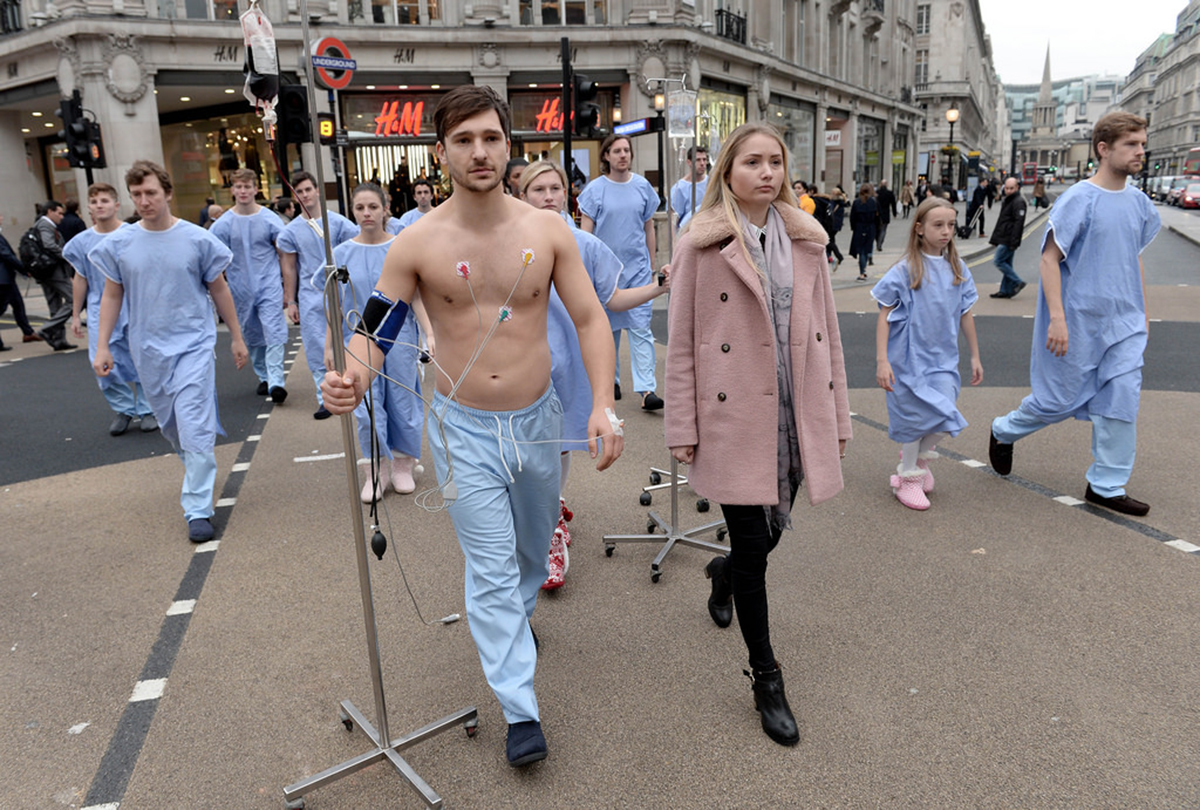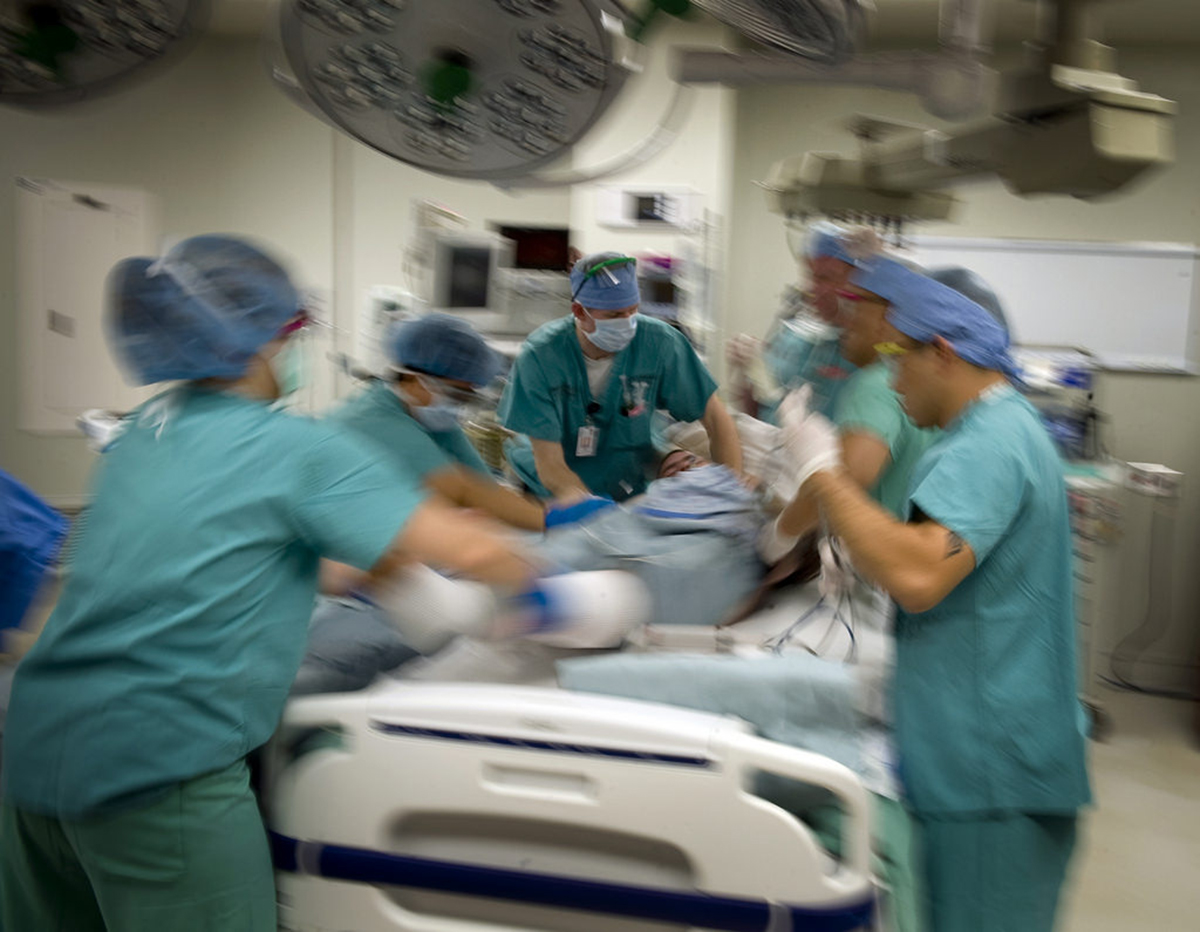Three-D printing technology has become something that ordinary people can afford. With basic 3-D printers sold for a retail price of just $400 or so, many home hobbyists are having fun making simple objects from coils of liquid plastic laid down in 1/2-milllimeter layers one layer at a time.
Three-D Printing Already a Reality in Medicine
Three-D printing has also found a niche in medicine. Surgeons use 3-D models of their patients' internal organs to practice difficult operations. When Boston Children's Hospital Dr. John Meara was called to do a complicated operation to move the eyes of one-year-old Violet Pietrok, who had a congenital malformation called a Tessier cleft that placed her eyes on the side of her face, he persuaded colleagues to use MRIs of her skull and facial bones to make a 3-D model of her head so he could fully understand which bones he needed to move. At a cost of just $1200 each, four models of the bones were made, each accurate to less than a hair's breadth. The models allowed Meara to figure out how to move the bones so that the eye sockets were close enough, but not too close, to correct the child's vision without severing the optic nerve. The procedure was successful, and now Boston Children's Hospital has a Pediatric Simulator Program and a $400,000 3-D printer that runs nearly fulltime in its basement.

Tailor-Made Medical Devices That Save Patient Lives
Three-D printing has also been used to make unique medical appliances. Garrett Peterson was born to his parents Jake and Natalie in Layton, Utah in 2012. Garrett had a defective windpipe. Over and over his windpipe collapsed, and over and over he had to have emergency resuscitation. Garrett spent the first year of his life in an ICU, and his doctors were not sure how long they could keep him alive. Then Jake and Natalie heard about doctors at the University of Michigan who were using 3-D printers to custom-make tiny devices they call "splints" that can keep the larynx open. Their doctors were able to get plans for a splint, duplicate it with a 3-D printer, and implant it in Garrett. In a couple of weeks he was finally able to go home to live with his family.
READ World's First Head Transplant Scheduled For 2017
Biological Robots
University of Illinois researcher Vincent Chan has even been able to make tiny "biological robots" from a combination of muscle cells and gel that have the capacity to travel around the body, carrying sensors or delivering medicine. Chan's method uses the 3-D printer to lay down the gel in the right pattern. Then he adds a soup of muscle cells and allows them to "swim" to the right place in the organ. There's just one problem with the technique. The cells don't necessarily move to where they need to go. That's where a recent innovation called "acoustic tweezers" comes in.
Using Ultrasound To Move Cells Around To Make Organs
A team of researchers at Pennsylvania State University and MIT thinks they may have the solution to the problem of misplaced cells. It's not possible to pick up individual cells even with tiny forceps, but it may be possible to move them around with a device they are calling "acoustic tweezers."
Tens of millions of science fiction fans know the character Dr. Who who does amazing things with his "sonic screwdriver." While the fictional sonic screwdriver can melt steel doors and move space ships, the now very real acoustic tweezers can move materials to precise locations on a microscopic level.

The holy grail of 3-printing has been printing organs made from human cells. The raw materials for 3-D organs would not, at least in theory, be that hard to acquire. Even in adults, a patient's stem cells could be used to make mass quantities of the kinds of cells needed to make an organ. Certain kinds of tissues have already been 3-D printed, although the connective tissue from a cadaver organ (which won't be rejected when it is transplanted) has to be used for the scaffold on which the cells are placed.
Using Gentle Vibrations to Make Tissues and Organs from Single Cells
Acoustic tweezers technology uses gentle vibrations to create pressure gradients that move cells into the places they need to be in 3-D printed human organs. These vibrations involve very, very tiny amounts of energy, less than one ten-millionth of the power that would be exerted by a low-power laser. Using a kind of ultrasound, the acoustic tweezers can move individuals cells without touching them, without contamination, and without the need for complex procedures to label them prior to placing them into an organ. They have no effect on cell viability, functionality, or genetic expression. The device has no moving parts, and does not have to set up for each use. It can move a single cell into position in an organ, sequencing billions of cells into a three-dimensional configuration.
What's Special About Acoustic Tweezer Technology and How Can It Be Used?
The breakthrough that makes acoustic tweezers possible is an understanding of sound patterns in terms of three dimensions instead of just two. The tweezers produce nodes, areas of minimum pressure, and antinodes, areas of maximum pressure. Like a miniature weather system, these nodes and antinodes can be moved so that the can position objects in three dimensions.
One of the major pluses of the technology is that it can use a variety of cells without having to sort them previously. This is a major breakthrough for 3-printing of organs, but there are many other potential uses.
- Studying the 3-D architecture of an a 3-D printed cancerous tumor, to see how the tumor grows and spreads.
- Understanding how organs remodel themselves after injuries, repairing gaps and broken connections caused by trauma or disease.
- Understanding how organs use stem cells even in adulthood to fight the ravages of aging.
- Cleansing the blood that has to be recirculated into the body during long, complex surgeries in which transfusion cannot keep up with bleeding. During bypass surgery, blood from the surgery is collected from the thoracic cavity and sent back into circulation, but it can pick up fat particles that can cause stroke. Acoustic tweezer technology may be able to remove these fat particles from recirculated blood. This technology may also make it possible to compensate for bleeding during surgery without any transfusions at all.
READ Kidney Transplantation as an Option for Kidney Failure
- Eliminating diseases transmitted in blood transfusions.
- Eliminating problems with blood group incompatibility during blood transfusions.
- Removing microorganisms from the blood to treat septicemia.
- Removing inflammatory compounds or clotting factors from the blood in a living patient.
- Printing neural networks to regenerate nerve function or even for brain regeneration.
Proof of concept for this technology has been achieved. Real benefits from acoustic tweezer technology are coming soon.
- Guo F, Mao Z, Chen Y, Xie Z, Lata JP, Li P, Ren L, Liu J, Yang J, Dao M, Suresh S, Huang TJ. Three-dimensional manipulation of single cells using surface acoustic waves. Proc Natl Acad Sci U S A. 2016 Jan 25. pii: 201524813. [Epub ahead of print] PMID: 26811444.
- Photo courtesy of militaryhealth: www.flickr.com/photos/militaryhealth/21802497841/
- Photo courtesy of taylorherringpr: www.flickr.com/photos/taylorherringpr/22139606410/
- Photo courtesy of taylorherringpr: www.flickr.com/photos/taylorherringpr/22139606410/


Your thoughts on this